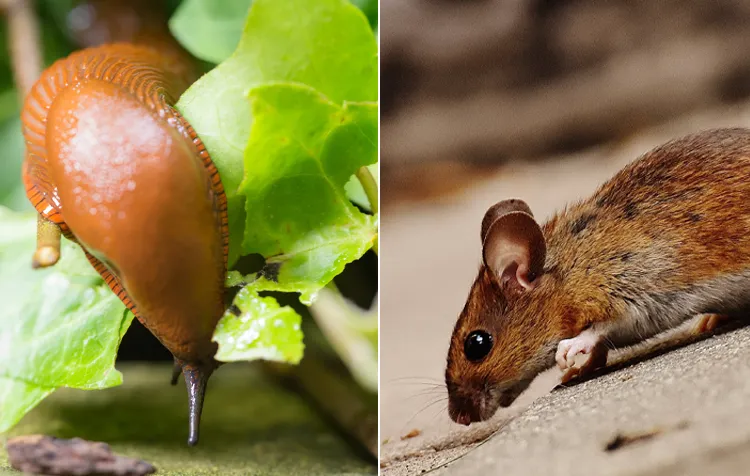How does sustainable pest control work? If you want to keep away or get rid of bugs and pests in the most environmentally friendly way possible, you've come to the right place! Both animal and plant creatures that cause damage in the human world are called pests.
For example, they reduce the yield of cultivated crops, eat supplies, damage clothing and destroy structures. Fortunately, there are ways and means to keep away or get rid of the so-called pests in an environmentally friendly and natural way.
In this article, I would now like to give you the best tips for gentle, organic pest control indoors and outdoors. Let's go!
Here you can find a short overview in advance:
Definition: What actually are pests?
While I personally am not a fan of calling other living things "pests," because they all have an individual role in nature. Nevertheless, the term has become accepted as a collective designation for animal, fungal and plant organisms, that leave an economic or visual mark in everyday human life or are simply generally perceived as annoying.
The opposite of pests are Beneficial insects. In our linguistic usage, this means animals that benefit us humans through their behavior. For example, because they eat pests or destroy them.
But nature is of course much more complex and does not think in pigeonholes! In fact, a pest can also be a beneficial insectbecause, for example, it is a natural enemy of other pests, pollinates plants, contributes to humus formation in the soil, or serves as a food source and attracts other beneficial insects.
And what is vermin? This term refers mainly to smaller animals, such as rats, mice, cockroaches, woodlice, silverfish or moths, which many people consider a nuisance. However, the word "vermin" is also often used as a synonym for the word "pests".
Species: Which pest types cause damage?
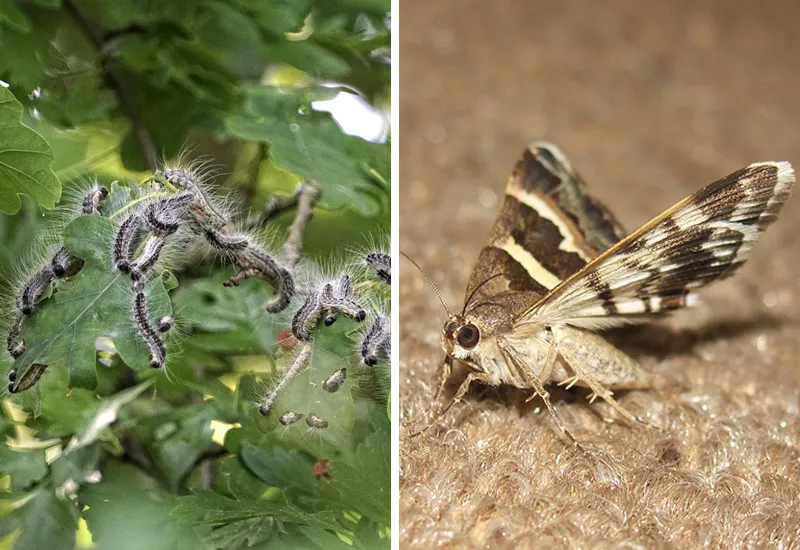
For sustainable pest control, we should first still look at the different types of pests in the garden and in the home. They are classified, for example, based on their characteristics, their habitat, the plants or materials they infest and also according to the damage they cause.
Here you will find a common classification of pests into different damage categories. I will give you some examples as a direct practical reference.
Storage pests
Storage pests are mostly animal organisms that can infest and damage stored food and agricultural products. They can be found in agriculture, warehouses, stores or private homes and can affect the quality of food, cause losses and in some cases even transmit diseases.
Examples of stock pests: Clothes moths, flour moths, bacon beetles, grain beetles, flour beetles, cockroaches, bread beetles, cereal flat beetles, dried fruit moths, and house mice.
Wood pests
Wood pests are animal or fungal organisms, attack and destroy the wood products. They can occur in both forested and developed areas, where they cause aesthetic or structural damage to buildings, furniture, and other wood structures.
Examples of wood pests: Wood wasps, termites, house longhorn beetles, woodworms, Anobiidae and some species of fungi that decompose wood. (e.g. dry rot or fence leaf fungus).
Agricultural pests
Agricultural pests are Animals and weeds that cause damage to crops. In agriculture in particular, they can lead to significant crop failures, quality losses and, not least, economic losses.
Examples of agricultural pests: Colorado potato beetle, cereal bugs, codling moth, aphids, grape cherry stem moth, slugs, Mole, Field mice and certain weed species.
Forest pests
Forest pests are animal and fungus-like organisms that can cause great damage to trees or forest stands and occur in both natural and managed forests. They ultimately impair the growth of trees, shorten their lifespan and accelerate forest dieback.
Examples of forest pests: Bark beetles, oak processionary moth, spruce bark beetle, sapwood beetle, pine nematodes, gypsy moth, ash bark beetle, and various fungal species. (e.g. ash shoot dieback or red rot).
Advantages: Why control pests in a sustainable and animal-friendly way?
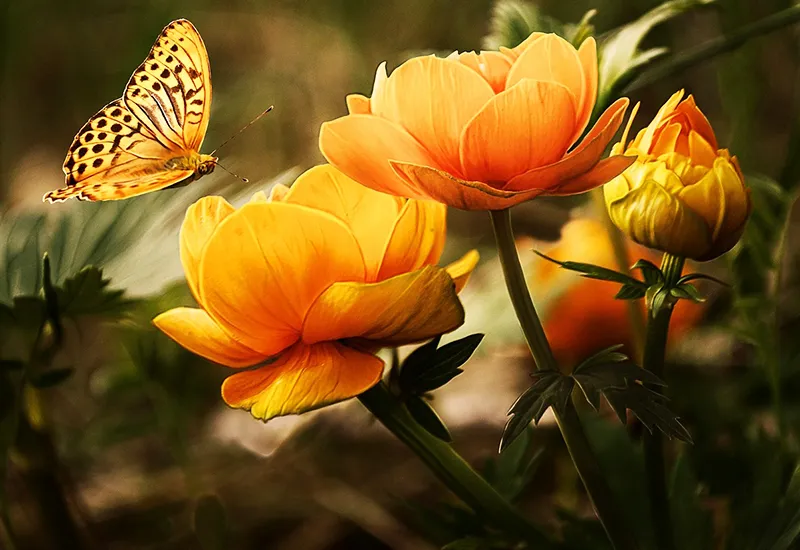
Chemical pesticides may be easy to use and work quickly and reliably against pests. But they entail a real rat's tail of problems. Here, therefore, I present to you - briefly and concisely - some of the reasons, benefits and opportunities of sustainable pest control.
Protect biodiversity
Sustainable pest control contributes to the Preservation of the diversity of animals and plants with, since they Protects beneficial insects, the toxic Pesticide use prevented and maintains the natural balance in the ecosystem.
Avoid environmental pollution
Since pests are naturally driven away also the Prevents chemicals from entering water, soil and airso that the environment does not suffer any damage.
Prevent animal suffering
The use of environmentally and animal friendly control methods minimizes the Suffering of the pests and also of all wild and domestic animalswho could come into contact with the agents.
Avoid formation of resistances
Sustainable pest control relies on a wide range of methods to Resistance of pests to chemicals and to maintain the effectiveness of natural measures in the long term.
Benefit from economic advantages
Controlling pests sustainably can offer long-term economic advantages, especially for farmers, because they can less dependent on expensive, chemical pesticides are and maintain the quality of the crop and soil in the long term.
Protect human health
Since the biological pest control no use of dangerous chemicals or pesticidesThe measures also protect human health - especially that of farmers, employees and consumers.
20 pests and how to keep them away in the most animal and environmentally friendly way possible
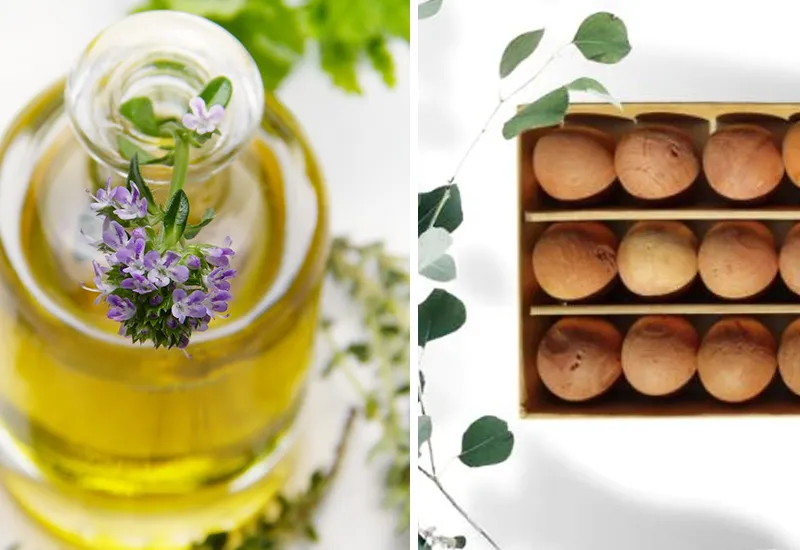
You can also keep pests away and get rid of them without the use of poisons or other environmentally harmful or deadly agents. For example, through natural predators, a clever choice of plants or natural home remedies.
Here I will now introduce you to some of the so-called "pests" in the home, garden and agriculture and explain in each case how you can fight them in a natural, organic and sustainable way.
1. moths
Clothes moths can be controlled mainly by the odor unpleasant for the animals by Closet cedar drive away. The scent of lavender or essential oils are also very effective. This advice is fundamental for that also your Clothing lasts as long as possible and thus becomes more sustainable.
2. snails
With intense-smelling herbs like rosemary and thyme, or even grasses and ferns, you can send slugs fleeing. Since classic Ribbon snails (with snail shell) usually eat only dead plant debris, they do not even need to be controlled.
Slugs gladly help themselves to salads and other cultivated foods. But never sprinkle salt on slugs, it is extremely torturous and brutal. A slug fence or the release on a meadow is much more animal and environmentally friendly.
3. white fly
The whitefly, which belongs to the moth scale insects, likes to settle on ferns, tomatoes, peppers or even rhododendrons. By Basil or thyme planted nearby, you can counteract them. Natural enemies of the whitefly are for example ichneumon wasps, which are attracted by wild herbs or cornflowers, among other things.
Tip: In a separate article I'll explain to you if Vegan:inside kill flies, mosquitoes and other insectsor not. Feel free to take a look. It's an interesting take on the question "Where does animal love end?".
4. spider mites
Raise the humidity around the plants by using regularly sprayed with water. This is how you prevent spider mite infestation. Applying neem oil and canola oil can also help. Also promote the conditions for Predatory mites, as they are natural enemies of spider mites.
5. cabbage white butterfly caterpillars
Immediately after planting certain types of cabbage, you should cover them with a Pest protection net hedge. Thyme, mugwort or aniseed help distract the insect from the smell of cabbage.
6. fungus gnats
Also Baking powder and Baking soda are inexpensive, sustainable pest control products. You can simply sprinkle them on the soil in the plant pot with a sieve and moisten slightly to kill the larvae. A yellow board will help snag the adult fungus gnats.
7. ants
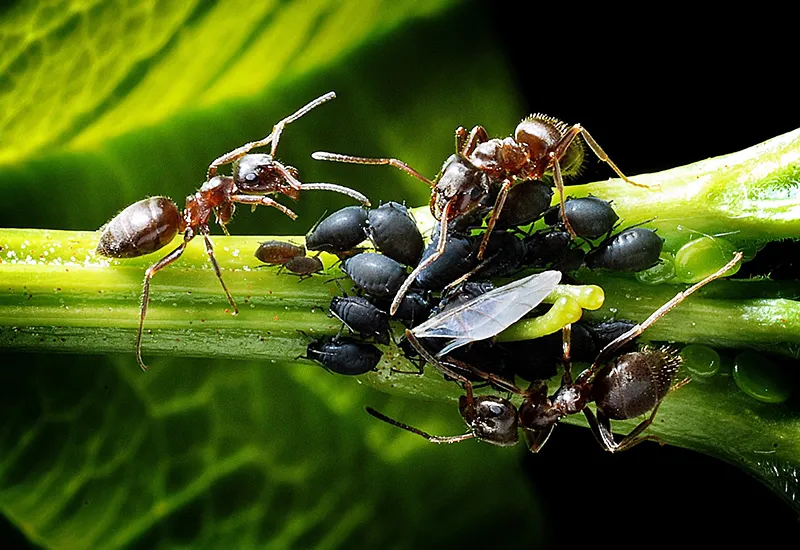
Disrupt the ant trails by Lemon juice or vinegar on their paths. You can also create barriers from Chalk or diatomaceous earth erect to protect plants from pests such as ants.
Natural enemies of the ant, by the way, are Amphibians, spiders and also other insects like Beetles and millipedes. But do not forget that ants are also beneficial insects in the fight against aphids and scale insects.
8. house mice and rats
Of course, you should avoid the use of poisons and mechanical pest control such as mice and rat traps. If the animals are already in the house, use creative live traps and release them into the wild.
In order to prevent them from entering your four walls, you should make all possible entrances, such as sealing cable ducts, leaking joints and utility lines, placing garbage cans far away from the house, and using odor-intensive home remedies like Peppermint oil or vinegar use to keep away mice and rats.
9. caterpillars of the boxwood borer
The caterpillars of the boxwood borer unfortunately cause great damage in many gardens. Remove the caterpillars and webs by hand and use pheromone traps to monitor the population. In addition, promote the living conditions for natural enemies such as Birds or ichneumons.
Tip: How to make a create a bird friendly gardenI will explain this in a separate blog article.
10. potato beetle
Potato beetles love not only potatoes but also eggplants and peppers. Simply remove the beetles and their larvae by hand or rely on natural predators such as Sand lizards, grass frogs, toads, shield bugs and birds. Also the cultivation of Horseradish and marigolds works wonders to repel potato beetles.
11. cockroaches
To keep cockroaches at bay, always stash food scraps and sweep the floor. Also the Combination of vinegar and pepper is an insurmountable barrier for the pests. Also the smell of Laurel and catnip can help you get rid of cockroaches in an animal-friendly and ecological way.
12. earth fleas
Small holes on young plants are often the work of earth fleas. To prevent an infestation of a bed, help attached to the ground Vegetable protection nets or also the regular removal of weeds in the spring before cultivation, which they just love to eat.
Once the ground fleas are present, pollinating infested young plants with Rock flour help by sieve. Ground beetles, predatory beetles, ichneumon wasps, shrews and hedgehogs for example, are natural enemies of small flea beetles from the leaf beetle family.
13. voles
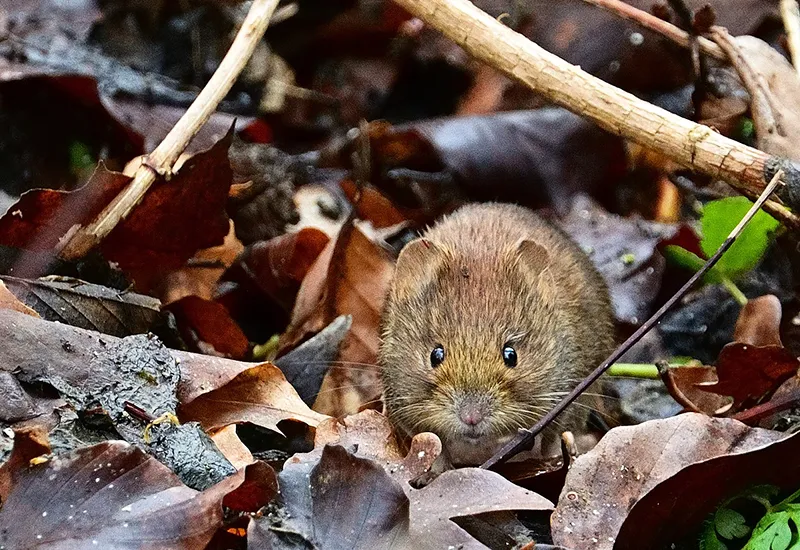
Help against damage from voles Vole grid around sensitive plants. Also scent barriers like Garlic or lavender serve as a deterrent. Natural enemies are for example Weasel or marten, so they should always have access to the property.
14. flying
Flies are also considered pests and can be controlled by natural means. So that they outside in the fresh air you should use fly screens and eliminate food sources such as fruit lying around and food scraps.
Also build a Scent barrier from tomatoes, lavender or basil on your Sustainable terrace. After all, flies do not really like these plants. Also the scents of Lavender oils or eucalyptus oils can help further.
15. gall mites
Sustainable pest control of gall mites should also start with preventive measures. For this you can for example early ripening fruit varieties, prefer to late-ripening varieties, as the latter are more affected by gall mites. Also a self-prepared Garlic broth and a nettle liquid manure help further.
Predatory mites are natural enemies of mites that look like tiny bumps on the leaves of plants.
16. scale insects
Scale insects are among the most common pests - both on houseplants and on balcony and garden plants. A light infestation can be treated by hand with a toothbrush or a damp cloth remove. Also, a solution of water, Orange oil and natural dishwashing detergent can remedy the situation.
By the way, the natural enemies of scale insects include. ichneumon flies, lacewings, earwigs and ladybugsYou should promote their living conditions to support them. Even a single ladybug eats about 40,000 scale insects in its entire life.₁
17. cicadas
Cicadas feed on plant juices and can transmit fungi to plants. To keep the pests away in the long term, you can use for example strongly diluted vinegar essence on the undersides of the leaves of the respective plants. In addition, you should protect their natural enemies, such as Earth wasps, Lacewings, predatory bugs and birds, provide a livelihood.
18. aphids
Aphids can cause great damage to plants. Decoction or slurry of field horsetail, garlic and oregano can help you get rid of the pests from your garden permanently. Cooled black tea from a spray bottle also helps against aphids.
Natural enemies of the small aphids include beneficial insects such as. Ladybugs, hoverflies and Lacewings.
19. frost moth
The frost moth likes to attack fruit trees, deciduous trees, berry bushes and also roses. Unfortunately, in my experience, there are no effective home remedies. To prevent damage, you should therefore Place nesting boxes for great tits, their natural enemies.. ichneumon flies also feed on frost moths and can help you with sustainable pest control.
20. wasps
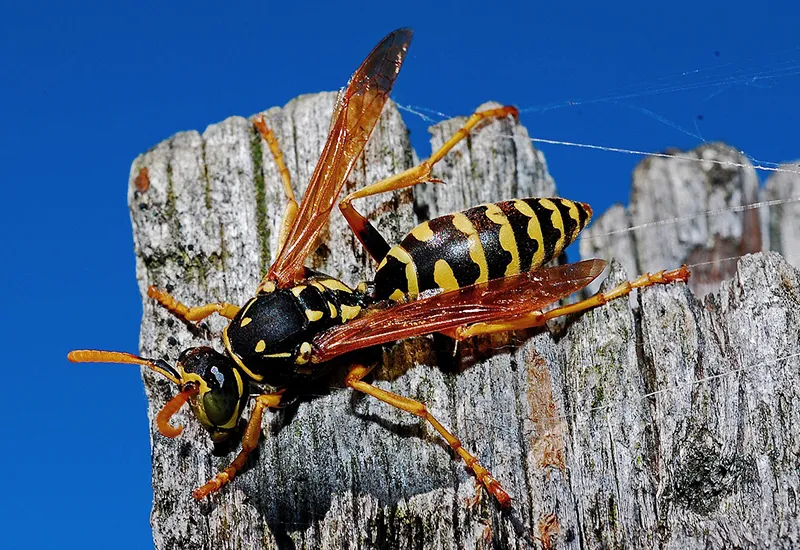
Since they eat the larvae of beetles, butterflies, as well as flies and even carrion, wasps are actually quite helpful beneficial insects. But since they sting us humans from time to time, they are considered annoying pests, especially at the coffee table.
Basically you should therefore Keep jam jars sealed and also other tempting foods always cover. Effective, natural home remedies against wasps are for example Clove, citrus and tea tree oil or even burnt coffee powder. Also helps a pot of basil or a clove of garlic cut.
Prevention and sustainable pest control have priority
Now you know why it is worthwhile to prevent pests and, if the worst comes to the worst, to drive them away in a gentle and natural way. Over time, you'll learn to keep them out before they can do any damage. However, if it is already too late and, you now also have some predators, deterrent plants and natural pesticides on hand to help you.
"Any stupid boy can crush a bug. But all the professors in the world can't make one."
Arthur Schopenhauer (more at Animal welfare quotes)
I hope that this article could help you. Do you have any questions, suggestions or further tips for more sustainability in pest control without poison and chemicals? Then I look forward to your comment.
Stay sustainable,

PS: How to get a really Create a sustainable gardenI'll explain this to you now in the next blog article. Good luck with the implementation!
References:
₁ M. Frietsch: Beetles - beneficial insects and pests (as of 15.06.2020), available at https://www.planet-wissen.de/natur/insekten_und_spinnentiere/kaefer/pwienuetzlingeundschaedlinge100.html. [26.04.2023].

